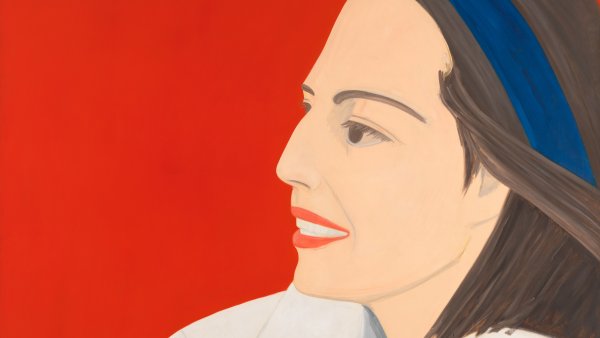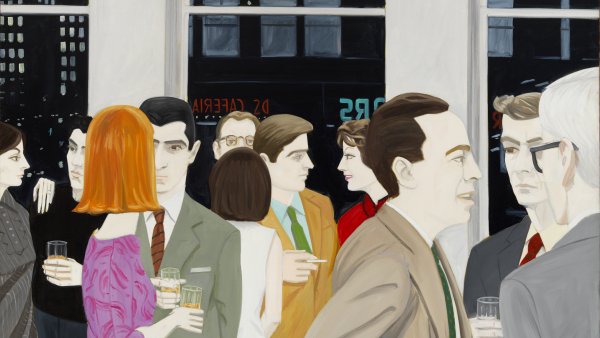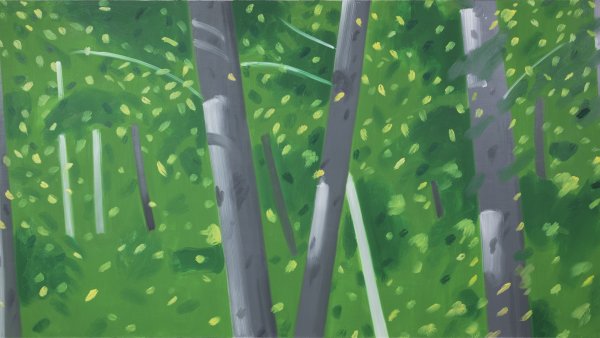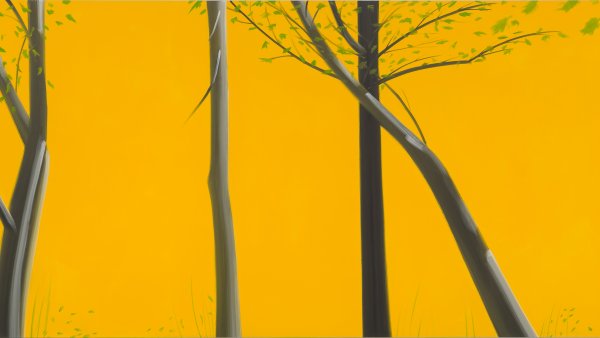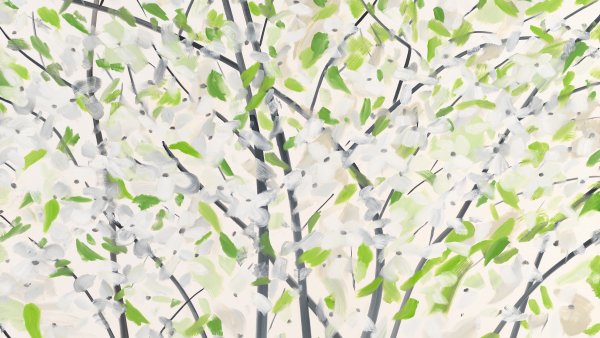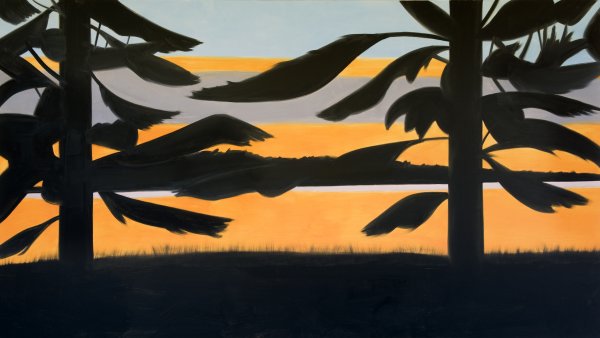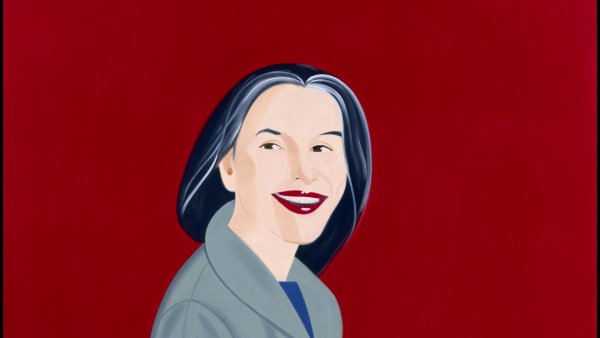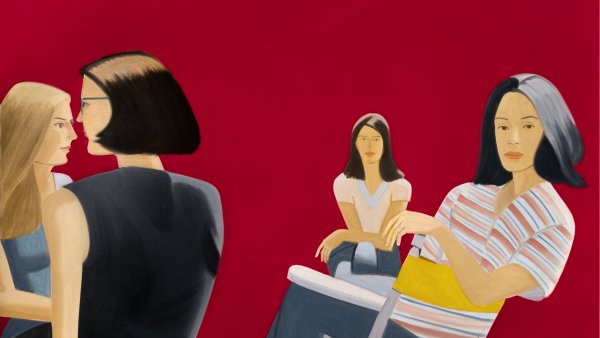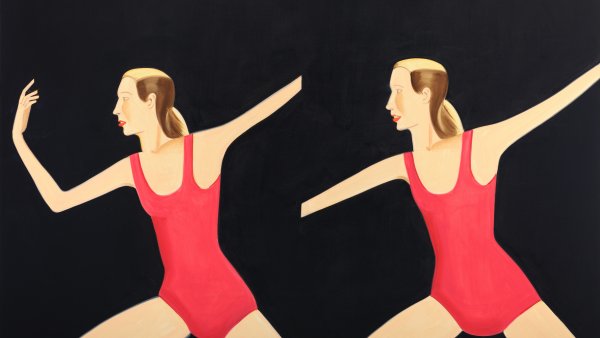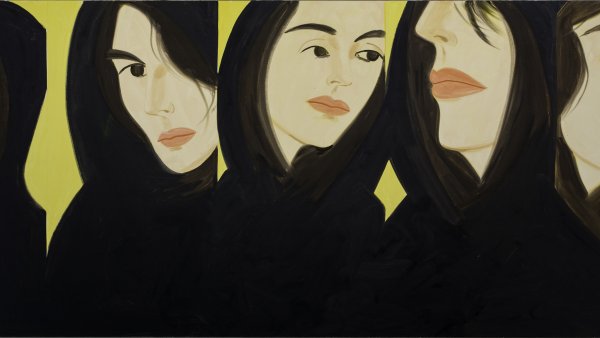Pissarro seized by Nazis to be sold at auction after families settle | ||
In an undated image provided via Christie’s, “The Anse des Pilotes, Le Havre,” by Camille Pissarro, painted in 1903. A Pissarro painting that was at the center of a dispute between the heirs of a Jewish couple whose art collection was seized by the Nazis before World War II and a Jewish family who bought it in 1994 will be sold at auction after the two sides reached agreement. Via Christie’s via The New York Times. | ||
The details of the settlement were not disclosed, but Christie’s has placed an estimate of $1.2 to $1.8 million on the work, “The Anse des Pilotes, Le Havre,” which it intends to sell May 14 in New York. | ||
Claude Monet, (1840-1926), Champ d'avoine et de coquelicots, signed and dated 'Claude Monet 90' (lower right), oil on canvas, 25.5/8 x 36.1/4 in. (65 x 92.1 cm.) Painted in Giverny in 1890. © Christie's Images Ltd 2022.
Christie’s has announced Claude Monet’s Champ d’avoine et de coquelicots, (estimate: $12 million – 18 million) will highlight the 20th Century Evening Sale during the Spring Marquee Week of sales. The 1890 masterwork comes to Christie’s from an Important Private French Collection along with two wonderful examples from the late 19th century offered in the Impressionist and Modern Art Day Sale: Alfred Sisley’s Femme et enfant sur le chemin des près, Sèvres (estimate: $400,000 – 600,000) and Jean-Baptiste Camille Corot’s Le gros arbre (environs de Gournay) (estimate: $200,000 – 300,000). The group of three paintings is incredibly fresh to market, having been held in the same private family collection for decades, and in the case of the Monet, for over a century.
Together these three works chart the development of Impressionism. Often regarded as the progenitor of this movement, Corot was an important influence on the young generation of artists who wanted to depict the world around them with a novel spontaneity and directness. Around a decade after Corot painted Le gros arbre (environs de Gournay), Impressionism as a movement had been founded. Sisley’s portrayal of a quiet, sunlit rural road is the epitome of the new form of landscape painting that these artists pioneered. Like his Impressionist friends, Monet had long been dedicated to the portrayal of the passing effects of light and atmosphere on the landscape. At the beginning of the 1890s he took this interest a step further when he began to work predominantly in series, painting the same scene multiple times, each canvas rendered with varying palettes depending on the time of day and weather effects. Champ d’avoine et de coquelicots is a brilliant example of this practice, demonstrating how Monet transformed the beautiful countryside of his beloved Giverny into symphonic harmonies of color and light. Capturing the abundantly flowering poppy field, this is one of a series of five works, each of which depict this dazzling rural spectacle.
Antoine Lebouteiller, Head of Impressionist and Modern Art Department, Paris remarks, “We are so pleased to offer Champ d’avoine et de coquelicots in our 20th Century Evening sale this Spring. This painting is a true masterpiece that brings to life the critical development of Monet’s seminal serial method during this all-important period in his practice. Painted near the artist’s Giverny home, the canvas features a lush field of impastoed color in jewel-like tones of red, orange, and emerald green juxtaposed with soft lilac hues in the distance, beautifully capturing the ephemeral effects of light and atmospheric conditions. It is an honor to steward this painting alongside two works from the same collection by 19th century masters, Sisley and Corot. These three works, which have been hidden away in a private collection for over half a century, together showcase the artistic tenets that lay at the heart of Impressionism.”
Monet settled in Giverny in 1883. Over the following years, he came to know the landscape intimately in a way that made possible the extended serial treatment that underscores his later artistic production. After a number of painting campaigns around France and further afield in the late 1880s, in the summer of 1890, Monet became entirely engrossed by Giverny. He pictured surroundings in their most abundant, elemental form, emphasizing the agrarian nature of the land. In this way, he reacquainted himself with the pastoral beauty of Giverny while further establishing his legacy as the key artist of rural France. The approach that Monet employed in Champ d’avoine et de coquelicots and the accompanying works created throughout autumn of 1890 would mark the start of a decade that is defined by the artist’s highly celebrated series, including the Meules and Peupliers.
Monet’s Champ d’avoine et de coquelicots was originally acquired by the legendary art dealer Paul Durand-Ruel directly from Monet in May of 1891, one year after its creation. In 1914, it was acquired by a private collector; the painting has remained in the family’s collection until present day.
ALFRED SISLEY (1839-1899)
Femme et enfant sur le chemin des près, Sèvres
signed 'Sisley' (lower right) oil on canvas
14⅞ x 21⅞ in. (37.7 x 55.5 cm.)
Painted circa 1879
$400,000-600,000
JEAN-BAPTISTE CAMILLE COROT (1796-1875)
Le gros arbre (environs de Gournay)
signed ‘COROT’ (lower left)
oil on canvas
15 x 22 in. (38.1 x 55.8 cm.)
Painted in 1865-1870
$200,000-300,000
Sisley’s Femme et enfant sur le chemin des près, Sèvres pictures a charming scene of a woman and child walking along a humble pathway within the larger context of a wonderfully rendered rich landscape of greenery and sky. The works displays a remarkable variation in texture—from spontaneous strokes of blue to effect the color of the sky, to the thick layers of paint that articulate the natural foliage. This highly prized painting has remained in the same private collection for nearly 60 years; this spring will be the first time it will appear at auction.
Corot’s Le gros arbre (environs de Gournay) is an exquisite example by the master at the height of his powers. Corot perfectly captures a moment in time, creating a depth of landscape by the placement of the seated girl and cow in the foreground, the gnarled tree defining the middle ground, and the rock formation, architectural elements, and hills beyond forming the background. These features all serve to draw the eye of the viewer gently though the painting; the result is a visually delightful depiction of a picturesque summer day in the French countryside.
Ellsworth Kelly (1923–2015)
Blue Red-Orange
oil on canvas
75 x 69¾ in. (190.5 x 177.2 cm.)
Painted in 1964-1965.
Estimate: $3,000,000-5,000,000
Kenneth Noland (1924–2010)
Lunar Episode
acrylic on canvas
68 x 70 in. (172.7 x 177.8 cm.)
Painted in 1959.
Estimate: $3,000,000-5,000,000
Christie’s has announced Property from the Estate of Sondra Gilman will be sold during the Spring Marquee Week of sales taking place this May in New York. Highlighting the group are three works by Ellsworth Kelly, Agnes Martin, and Kenneth Noland which will be included in the 20th Century Evening Sale.
Ellsworth Kelly’s Blue Red-Orange is exemplary of his ability to evoke feeling and human connectivity from abstract forms. In it, competing fields of vibrant color create a sense of drama, pushing the chromatic power of color to its limits. This tension between the strong presence of blue tightly juxtaposed within two slices of red creates the notion of a sculpture in relief. It is unique for its remarkable scale and early date, from his coveted early works of the 1960s.
Agnes Martin’s Untitled #8 employs paint and graphite to unearth truths about perception, intimacy, and spirituality. Included in the artist’s retrospective at the Serpentine Gallery in London, Untitled #8 exemplifies Martin’s belief that art should be an act of enlightenment. The work comprises six horizontal grey stripes, almost levitating above the canvas. Like an ethereal tapestry, the painting displays a wonderful interplay between foreground and background. It is a superb example of the artist’s work from the 1990s, evoking a meditative sense of calm, beauty, and otherworldliness.
Kenneth Noland’s Lunar Episode is a superlative early example of the artist’s bold and innovative target paintings that transformed gestural constructs of Abstract Expressionism into formally celebrations of pure color. Featuring concentric circles of vibrant yellow, orange, and blush set against a monochromatic gray and blue background, it is one of the most vibrant and important target paintings to come to market.
Washington Crossing the Delaware Offered in Christie’s 20th Century Evening Sale
PROPERTY FROM A PROMINENT PRIVATE COLLECTION
EMANUEL LEUTZE (1816-1868)
Washington Crossing the Delaware
signed ‘E. Leutze’ (lower right)
oil on canvas
40 x 68 in. (101.6 x 172.7 cm.)
Painted in 1851.
$15,000,000-20,000,000
Christie’s has announced that Emanuel Leutze’s Washington Crossing the Delaware (estimate: $15 million – 20 million), a painting of transcendent historical impact, will be a highlight of the 20th Century Evening Sale taking place live on 12 May 2022 at Rockefeller Center. The painting hung for decades in the White House and is one of two extant versions by Leutze. The other version is the centerpiece of the American Wing at the Metropolitan Museum of Art. Leutze’s powerful imagining of a key moment in American history has been a cultural phenomenon from the minute it was seen and has been reproduced more than almost any painting in American history. This picture, which defined its era and has had a profound and lasting impact on art history and popular culture, will take its place in Christie’s New York saleroom during the 20/21 Marquee Sale Week alongside other definitive images of modern history, including Claude Monet’s Parlement, Soleil Couchant, Andy Warhol’s Shot Sage Blue Marilyn, and Mark Rothko’s Untitled (Shades of Red).
Tylee Abbott, Head of Department, American Art, said: “Emanuel Leutze’s Washington Crossing the Delaware is arguably the most important work of pre-War American Art to ever come to the market, and indeed set the record for any American painting at auction when sold in the 1970s. The only other extant version by Leutze is the centerpiece of the Metropolitan Museum of Art’s American Wing. The present version hung for decades in the White House, further demonstrating its importance to the nation. Depicting a dramatic moment at the beginning of our country, this iconic image serves as the origin of the archetype of an American hero that has become imbedded in our collective imagination and firmly places this work as one of the most famous images in art history.”
Vanessa Fusco, Co-Head of 20th Century Art Evening Sale, said: “Washington Crossing the Delaware is more than a painting; it is an image that has transcended any single canvas, or the artist who created it. Leutze’s composition has been reused and reinterpreted by artists from Grant Wood to Robert Colescott, and found its way into popular imagery from the Saturday Evening Post to The New Yorker. Within the 20th Century Evening Sale context, it is in the company of watershed works of art which defined their moment and fixed themselves in the public imagination. These extraordinary works speak to each other across decades about beauty, power, expression, perception, and the place of art in an era when images can be easily mass produced. Christie’s is honored to offer them together in an innovative sale format that promotes dialogues between the defining cultural moments of the past century.”
EMANUEL LEUTZE’S WASHINGTON CROSSING THE DELAWARE
This iconic painting has been published countless times in textbooks and articles, seen on U.S. postal stamps, and on the New Jersey state quarter, and is ubiquitous in popular culture. It is the creation of the artist Emanuel Leutze (1816-1868), an immigrant from Germany, who grew up in Philadelphia, returned to Europe as an aspiring painter, and then finished his career in the United States, where he gained fame and was a friend and mentor to many notable American painters.
Leutze and studio assistants, including Eastman Johnson, produced three known versions of this composition. The first was in the Kunsthalle Bremen, in Germany, and was destroyed in a World War II air raid. The second forms the centerpiece of the American Wing of The Metropolitan Museum of Art, in New York. The third is the present work. It is almost identical in composition to the Metropolitan’s version, and was widely exhibited in its own right. The present version was painted by Leutze with Johnson’s assistance and was also reproduced as an engraving that was widely disseminated and brought this composition international fame.
The picture being offered by Christie’s was commissioned by the original purchaser of the Metropolitan’s painting, the art dealers Goupil, Vibert & Co. They wanted a smaller version that could be more easily reproduced by the engraver, Paul Girardet, as a print. This painting was also exhibited in its day at major venues in New York, Philadelphia, and Chicago. Thanks to the engraving, within short order the image was everywhere. “Every town and village along that vast stretch of double river-frontage had a best dwelling,” wrote Mark Twain in Life on the Mississippi, 1883. “Over middle of mantel, engraving—Washington Crossing the Delaware; on the wall by the door, copy of it done in thunder-and-lightning crewels by one of the young ladies …”
Today, Washington Crossing the Delaware remains as relevant and renowned in American culture as when it debuted. The present version has had a notable modern exhibition history, from multiple shows at The Metropolitan, to the Smithsonian Institutions in Washington, D.C. and even in Düsseldorf. This painting hung in The White House for decades, beginning in the 1970s in the Nixon and Carter Administrations, through President Obama’s tenure, when it hung in the West Wing lobby. When the painting was installed on long-term loan in 1979, the curator Clement Conger remarked that this work was among “the most important American paintings ever to hang in the White House.”


%20Femme%20et%20enfant%20sur%20le%20chemin%20des%20pr%C3%A8,%20S%C3%A8vres.jpg)
,%20Le%20gros%20arbre%20(environs%20de%20Gournay).jpg)
%20%20Blue%20Red-Orange.jpg)
%20%20Lunar%20Episode.jpg)
%20%20italicWashington%20Crossing%20the%20Delaware.jpg)






















%20Three%20Ice%20Cream%20Cones.jpg)
%20Soleil%20couchant,%20temps%20brumeux,%20Pourville.jpg)









































%201877-8.%20Amgueddfa%20Cymru%20%E2%80%93%20National%20Museum%20of%20Wales.jpeg)



.%20Photo%20%C2%A9%20The%20Courtauld.jpg)



























